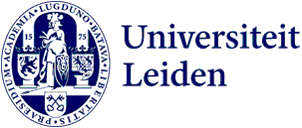
With this algorithm, new medicines can be found more quickly
Did he dare take a gamble with his PhD research? Jeroen Methorst didn’t have to think long about it. It could fail or turn out very well. The latter is the case. Methorst developed a computer system that helps researchers find the protein they need. ‘Our whole group is now using this program.’ Methorst will defend his PhD thesis on 2nd April.
Jeroen Methorst is a nanobiologist and biophysicist, but he didn’t find himself very handy in the lab. He taught himself programming: that turned out to be his forte. ‘My supervisor, Jelger Risselada, asked if I was up for taking a risk and developing something that could fail, but might also turn out very well.’
Methorst completed his PhD at the Leiden Institute of Chemistry on a computer strategy that the scientific community is likely to find very useful. For instance, colleague Niek van Hilten sought a protein capable of detecting and destroying many types of viruses. He achieved this using the strategy developed by Methorst.
The system knows enough about physics
Methorst: ‘Niek’s research started with the idea of developing a small protein, composed of twenty amino acids. It had to be able to recognize and break apart the strongly curved membrane of a small virus sphere.’ Methorst’s system knows enough about physics to assess whether a molecule can do this. It can also virtually simulate evolution to propose a suitable molecule. ‘You put in that you want a protein composed of twenty amino acids, and what it needs to do. A computer program starts with a few hundred randomly generated protein molecules, each twenty amino acids in size.’
An evolutionary algorithm allows the selection to crossbreed
Another program evaluates these molecules based on physics: which ten or twenty molecules are the best at recognizing and breaking apart curved membranes? This selection is then fed back into the evolutionary algorithm. This algorithm virtually breeds them together, akin to natural selection. The molecules essentially have offspring. Like in nature, these offspring resemble their parents but are also different. The selection program then chooses the best ones and feeds them back into the evolution algorithm. This process continues for about twenty or thirty generations, until the researchers are satisfied.
Simulation videos demonstrate the result
Due to the selected cookie settings, we cannot show this video here.
Watch the video on the original website orWhether the researchers can be satisfied is made clear to them by a simulation video generated by Methorst’s strategy. ‘The program that selects the best molecules does so by virtually testing all the molecules in simulations.’ The researchers can view (a sample of) these simulations and stop the system when they are satisfied. Niek van Hilten, who was searching for an effective virus killer, stopped after about 25 generations. The subsequent generation didn’t improve upon the previous one. In a German lab was found that the molecule was indeed capable of recognizing and destroying viruses in reality.
Sometimes things go wrong: the ingenious evolutionary biodynamic system also found molecules that could attract cholesterol. ‘Unfortunately, these molecules also strongly attracted each other in the lab. That clustering is undesirable.’ Such mishaps can occur because the system’s knowledge doesn’t encompass all of physics. ‘It lacks quantum mechanics, as that would slow down the selection program.’
A lot of computing power is required
To set Methorst’s system in motion, a vast amount of computing power is required. ‘That’s the bottleneck because supercomputers are scarce. You have to apply for one, much like you would for a research grant.’
The key to completing the system
The next step is making the enormous amount of simulation data usable for other researchers. Student Nino Verwei is working on a self-learning algorithm that predicts how a molecule should be structured to perform its function. ‘That’s the key to completing my system. It saves a lot of computing power, and the likelihood of the molecule working in the lab increases.’ The algorithm is trained using data from numerous simulations from Methorst’s selection program. Based on this knowledge, the algorithm predicts how well a molecule that hasn’t been tested in the lab will work. ‘We’ve now launched a web server where AI predicts how well a molecule works.’ Anyone can use it.

So, the gamble that Methorst took turned out quite positively. ‘Our whole group is now using my programs.’ He himself will remain involved as a postdoc for the time being. ‘Because I wrote the programs, I know exactly how to work with them.’
Text: Rianne Lindhout
